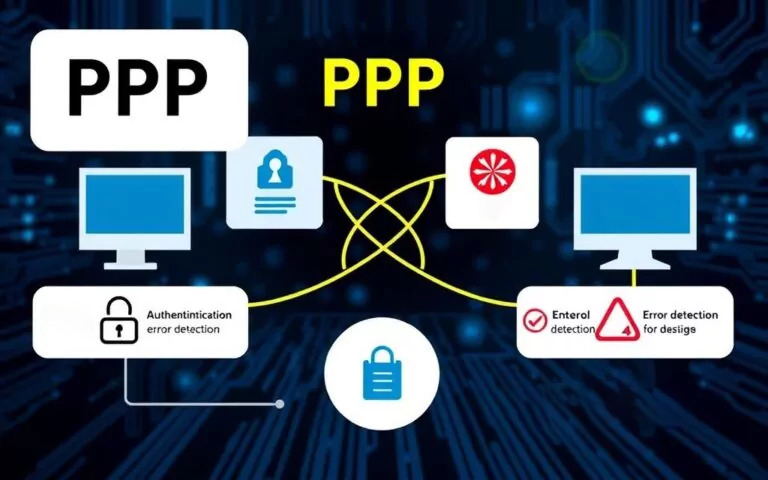What is Point-to-Point Protocol (PPP)?
In today’s interconnected world, where communication and data transfer between devices play a crucial role, protocols like the Point-to-Point Protocol (PPP) are essential. This article delves into what PPP is, its importance, key features, and applications, offering a detailed overview to enhance your understanding.
What is Point-to-Point Protocol (PPP)?
Point-to-Point Protocol (PPP) is a data link layer communication protocol primarily used to establish direct connections between two network nodes. Originally designed for dial-up connections, PPP has evolved to support various types of physical networks, including serial links, DSL, and optical fiber connections.

Key Features of PPP
- Encapsulation: PPP encapsulates network-layer protocol packets, enabling communication over different physical mediums.
- Authentication: PPP supports robust authentication methods, such as the Password Authentication Protocol (PAP) and the Challenge Handshake Authentication Protocol (CHAP).
- Error Detection: PPP ensures data integrity during transmission by using cyclic redundancy checks (CRC).
- Multilink Support: PPP enables the bundling of multiple physical connections into one logical link for enhanced bandwidth.
- Extensibility: The protocol’s architecture supports additional features and protocols, such as IPv6 and encryption.
How does it work?
Point-to-Point Protocol operates in three primary phases:
- Link Establishment: During this phase, the two devices negotiate the link parameters using the Link Control Protocol (LCP).
- Authentication: If enabled, authentication protocols like PAP or CHAP verify the identities of the connected devices.
- Network Layer Protocol Configuration: The protocol configures and encapsulates network layer protocols, such as IP, ensuring seamless data transfer.
Applications of PPP
PPP’s versatility makes it suitable for various applications, including:
- Internet Access: Widely used in dial-up and broadband connections to facilitate internet access.
- VPNs: Plays a key role in Virtual Private Networks (VPNs) by enabling secure point-to-point connections.
- Embedded Systems: Used in embedded devices for direct communication between hardware components.
- Mobile Networks: Facilitates data transmission in older mobile communication technologies.
Advantages of Point-to-Point Protocol
- Compatibility: Works across diverse physical mediums and network types.
- Security: Offers authentication and encryption mechanisms to protect data.
- Simplicity: Easy to configure and implement, making it ideal for various applications.
- Reliability: Error detection ensures data integrity during transmission.

Challenges and Limitations
Despite its advantages, the Point-to-Point Protocol has limitations:
- Overhead: Encapsulation adds additional data, reducing efficiency for high-speed networks.
- Obsolescence: With advancements in networking technologies, PPP usage has declined in favor of more modern protocols.
Conclusion
Point-to-Point Protocol remains a foundational technology in networking, enabling reliable and secure communication between devices. While its usage has diminished with the advent of faster and more efficient protocols, PPP’s simplicity and adaptability ensure its continued relevance in specific applications. By understanding its features and applications, businesses and tech enthusiasts can make informed decisions when implementing networking solutions.